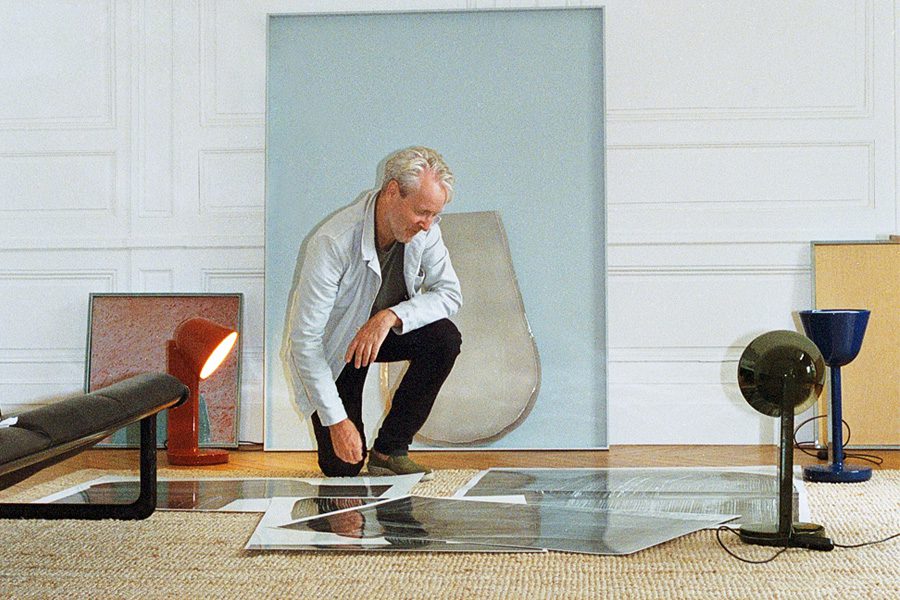Jim Graham and Brett Baba’s Seattle-based architecture practice boasts a robust portfolio of eclectic projects that evoke a refreshing, distinctly West Coast vibe. This month, the founders of Graham Baba Architects discuss finding balance, defying expectation, and what really brings a space to life.
Did you always know you wanted to be a designer?
Jim Graham: I wanted to be a doctor until my last year of high school. I was always interested in design and making things.
Brett Baba: When I was about 9 or 10, I had a teacher who noticed I liked to draw and build things and told me, ‘You should be an architect.’ And I knew from that point on that was what I wanted to do.
What are some of your first memories of design?
JG: My father is an architect, so I was always surrounded by design and architecture. My first memories of construction were of the house addition/remodel that my parents did when I was in kindergarten. I would rush home at noon to watch the carpenters build while I ate my lunch. They patiently suffered my eager curiosity and even let me swing a hammer. Of course, my father designed it. I always felt proud that we lived in one of his designs.
BB: I designed my own desk in grade school, which my mom had fabricated for me. Around the same time, before we moved into a new townhouse, my mom allowed me to pick out the style of façade from among four or five standard choices. I chose the one with the darkest color and most subdued stone.
Did where you grew up influence your career path?
JG: Travel from an early age has greatly influenced my curiosity about design.
BB: I grew up in Yakima, a small town in Eastern Washington where convenience tended to trump design. You can’t help but be influenced by your surroundings—in my case, the wide-open, semi-arid agricultural landscape—whether you are consciously aware of it or not. Ironically, I’ve now designed a number of places in my hometown that are having an impact on the city—one of which (Washington Fruit & Produce Headquarters) used a local barn as the inspiration for the clarity of its structure.
Give us a bit of your background: college, first jobs, early lessons learned?
JG: I went to the University of Illinois but started first in Aero/Astro Engineering. I wanted to be an astronaut, I wanted to build in space. I transferred to the architecture program after three semesters. I worked construction in high school and for my father’s firm while I was in college. The most influential years were studying in France as an undergraduate in college and then in Denmark while in graduate school.
BB: I went to the University of Washington School of Architecture. My first design job was working for an architect in Bellevue, Washington, designing retail stores. One of the most important early lessons in my career was the importance of carefully crafted drawings—they show pride in what you do, which can translate and reverberate throughout the entire course of the project.
Why and how did you start your own firm?
JG: I started my own firm in 1999 with no project, no clients. I was seeking the freedom to find my own design voice and projects that I found interesting and fulfilling. I have always considered having my own firm a way to wander in or outside of the architecture profession while I explore my own design interests. It has been extremely rewarding to build a talented team around this idea.
When we started, we were working with owners to redevelop their buildings, which led directly to working with the tenants who occupy them. Those tenants turned out to be a number of the city’s top chefs. Working with chefs and restaurant entrepreneurs has been incredibly exciting. Their artistic spirit is inspirational. The commitment they bring to their work is what we look for in every project.
Can you discuss some of your recent projects?
JG: We are designing a new school facility for two private schools in a single building. Education is a typology we have just begun to explore, but I am thrilled by the power of creating meaningful teaching spaces.
BB: Cowiche Canyon Kitchen is a new, ground-up building for a restaurant in Yakima [Washington]. Our clients wanted a building that contributed to the city. They wanted a building that reintroduced civic presence and scale to the downtown that had suffered from suburbanization. It was an honor to create a building that has contributed to revitalizing a beleaguered urban core. The Washington Fruit & Produce Headquarters Building, also in Yakima, provided an opportunity to create an oasis-like setting for an office building in an agri-industrial landscape. Our clients sought to elevate the experience of work and agri-business. Working with people who have a vision is what makes it all worth while.
Is there a challenging project that you are especially proud of?
JG: Some of the most rewarding projects are the ones with the tightest budget. It forces you to be creative about how you act and what you do. The Kolstrand Building brought a tired, broken building back to life and provided an incubator for many new, young businesses to grow and thrive.
BB: The Kolstrand Building consisted of an assemblage of seven different structures of varying vintages that had been cobbled together over the period of 100 years. Our job was to knit it all together in a cohesive and meaningful way within a very tight budget. It has been great to see multiple high-quality tenants during the depth of the recession who formed a strong community within the building.
What are you looking forward to at your office?
JG: We are beginning to work on projects at a larger scale and across the country. While I never want to lose the detail and the craft of smaller projects, I’m thrilled by the opportunity to influence larger projects in our city and elsewhere.
BB: Our upcoming retreat where we’re going to revisit the firm’s goals, values, and direction of the office for the next 10 years.
What do you find are the most challenging and exciting aspects of your job?
JG: The constant juggling and gear shifting, but that is the nature of the beast. This is also the most interesting and rewarding part of my job. However, I always tell my children that I don’t have a job. I just get to do what I love all day long.
BB: Probably balancing clients’ expectations with their schedules/budgets. The most exciting aspect is the ability to create beautiful buildings, spaces, and objects that did not previously exist.
What is the most important thing to remember when designing a restaurant—both in terms of branding and interiors??
JG: Too often we forget why we build and for whom the spaces live—the final ingredient if you will. People make a space come to life. Restaurants are wholly about conviviality—the shared experience over a meal. It is imperative that we keep this in mind.
BB: For restaurants, we always try to make spaces that are both intimate and accommodating—places you want to be, regardless of whether they are packed or empty—and to offer a variety of dining experiences in one restaurant. We also have a special affinity for telling the story of how things are made, from the clear expression of the structure of the space to putting the art of making food on display.
Is there an architect or designer you most admire? Why?
JG: I don’t have one. Qualities they must possess: a sensitivity to craft and detail, a poetic response to form, a tempered ego.
BB: I always come back to Carlo Scarpa because of the sophistication of his details.
What would be your dream project and why?
JG: Any project with great clients—clients who respect and value my talents and role in the process, are receptive to new ideas, and who embrace being pushed in their thinking, but who challenge me back and force me to be my best. Great projects happen with great clients.
BB: It would probably have to be an art museum, because designing for art requires a delicate balance of creating an inspiring space that doesn’t compete with the art, and involves the careful manipulation of light, both artificial and natural, while uplifting the spirit.
If you could have dinner with anyone, living or dead, who would it be?
JG: My grandfather. He was a great man and a valued mentor. He taught me the inspiration that is travel. I have so many more questions for him.
BB: Michelangelo is the first person to come to mind, because of his incredible talents and intelligence.
Where would you eat and what would you be having?
JG: We would be dining in my grandparent’s kitchen with a delicious meal prepared my grandfather’s loyal travel partner, my grandmother.
BB: Some amazing Italian food somewhere in Italy.
If you weren’t a designer, what would you be?
JG: That’s easy, I would be an astronaut!
BB: A fighter pilot.


